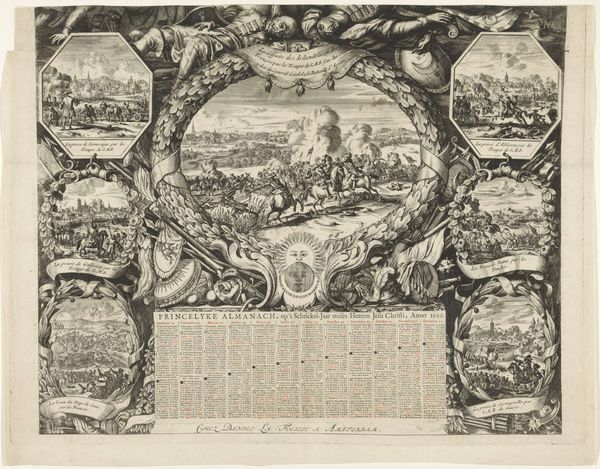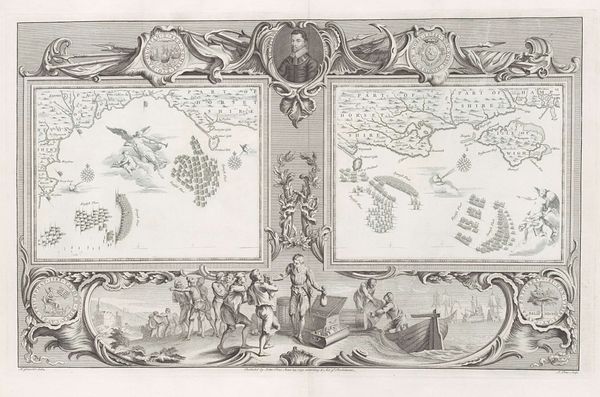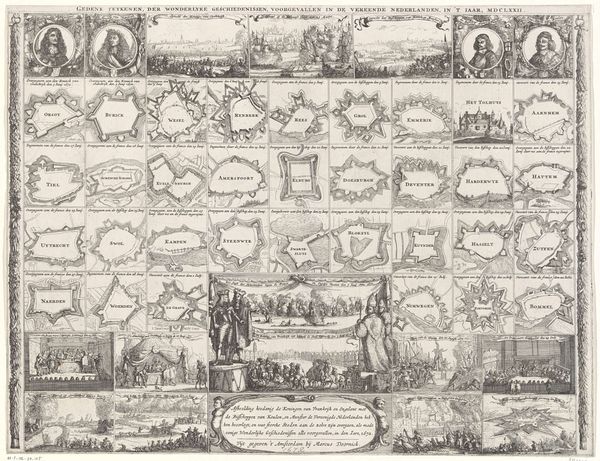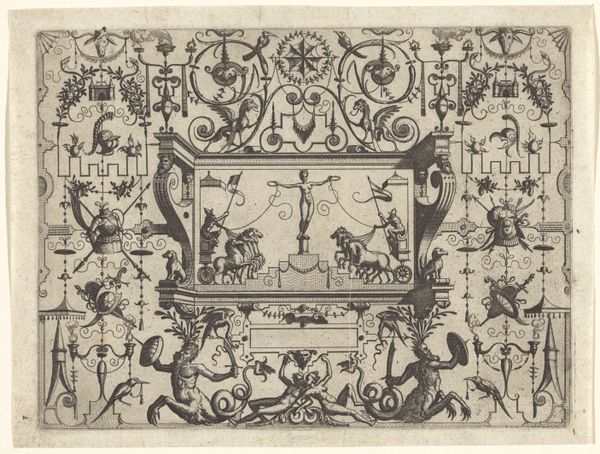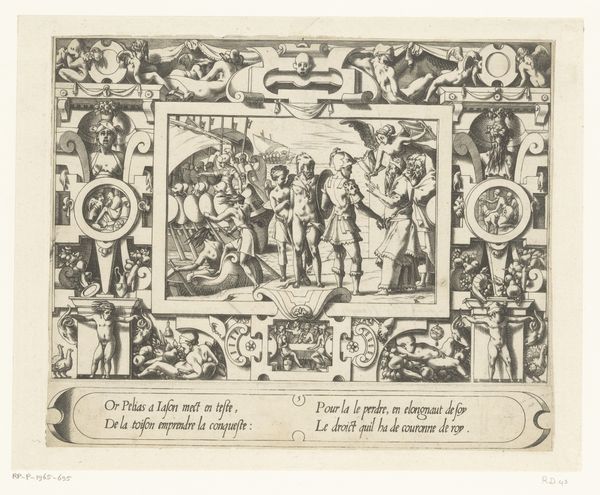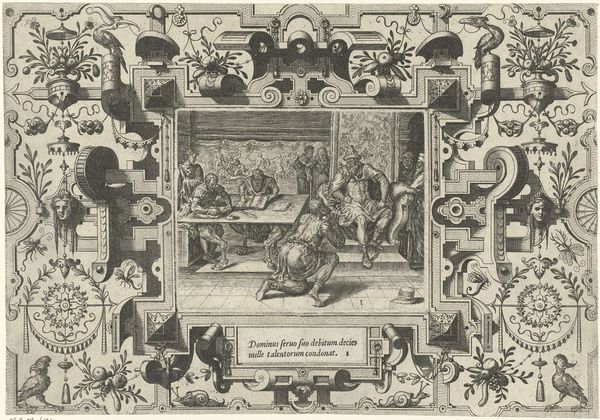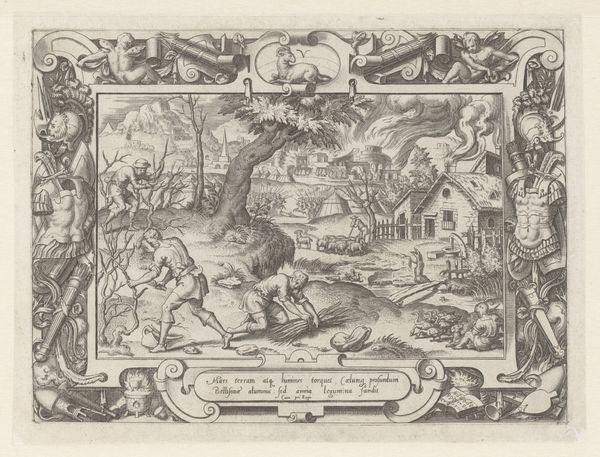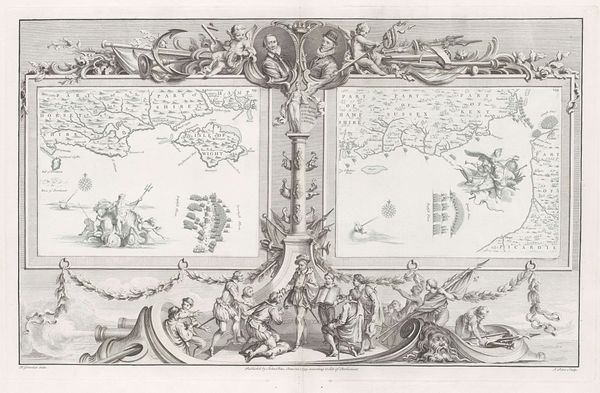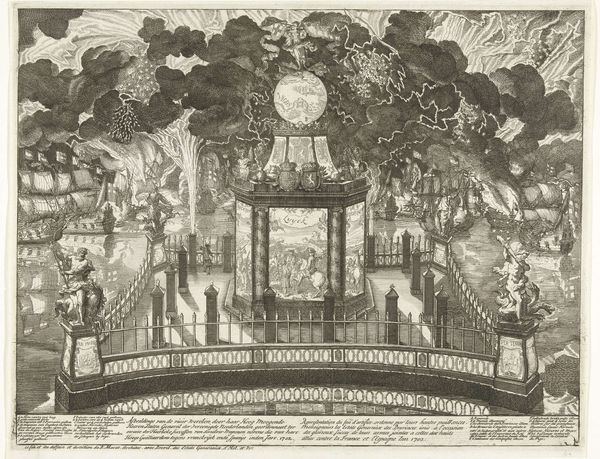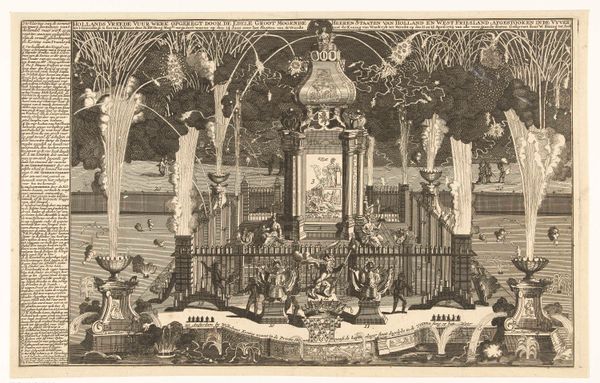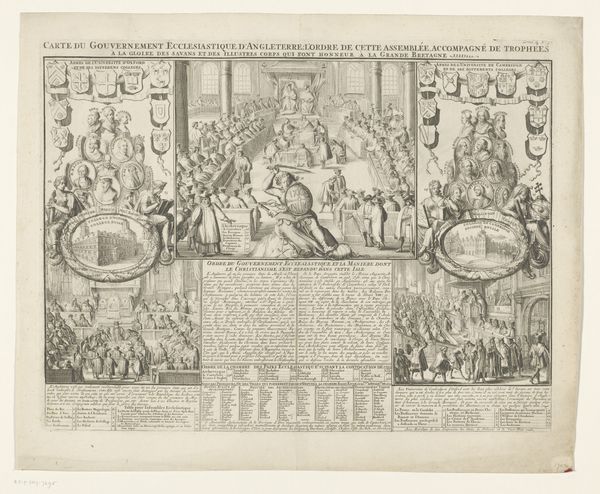
Overwinningen van koning Willem III in Ierland (onderste helft), 1690 1690 - 1691
0:00
0:00
print, engraving
#
narrative-art
#
baroque
# print
#
cityscape
#
history-painting
#
engraving
Dimensions: height 468 mm, width 600 mm
Copyright: Rijks Museum: Open Domain
This is a section of a print made around 1690 by Daniel de Lafeuille, celebrating William III’s victories in Ireland. It encapsulates the political role of prints in early modern Europe. Prints like these played a crucial role in shaping public opinion. This Dutch print uses visual codes to depict William as a triumphant military leader, securing Protestant interests against Catholic forces in Ireland. Note the scenes of battle, portraits of William, and symbolic representations of victory, all framed within an elaborate decorative border. The image reflects the complex socio-political landscape of the time, marked by religious conflict and struggles for power. Prints were often commissioned by political factions or rulers to disseminate propaganda and shape public perception of events. Historians use such prints, alongside written accounts and archival material, to understand the complex interplay of art, politics, and society. The meaning of such prints is always contingent on its historical and institutional context.
Comments
No comments
Be the first to comment and join the conversation on the ultimate creative platform.
